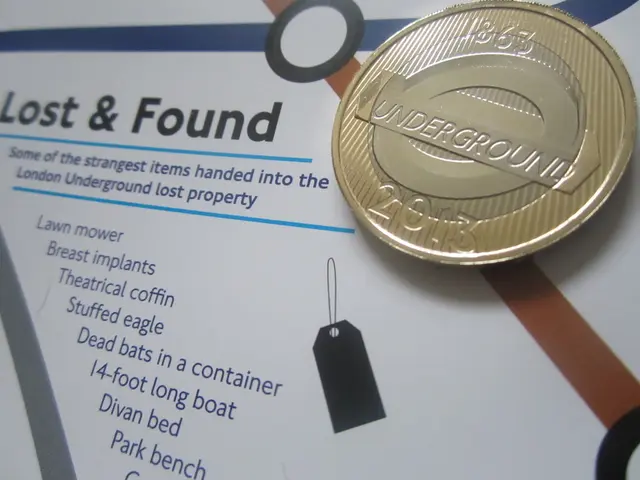Command Structure: Description, Tiers, Characteristics, Benefits
The chain of command is a fundamental aspect of organizational structure, providing a clear hierarchy of authority and responsibility. This system helps manage a large number of employees efficiently and effectively.
Advantages of the Chain of Command
The chain of command offers several benefits to organizations. Firstly, it provides clarity of reporting relationships. Each employee knows exactly who they report to and who reports to them, reducing confusion about roles and responsibilities [1][3][4].
Secondly, it establishes a clear hierarchy that helps maintain order, ensures accountability, and supports smooth communication flows vertically in the organization [1][3][4]. This orderliness is crucial for making decisions that align with the organization's goals.
Thirdly, the centralized decision-making process allows senior leadership to make decisions, ensuring consistency and alignment with organizational objectives [1][4]. This can streamline authority and responsibility.
Fourthly, the hierarchy distributes power and allows more senior leaders to offer support, motivation, and guidance to subordinates [1]. This distribution of power can foster a sense of camaraderie and mutual respect within the organization.
Disadvantages of the Chain of Command
Despite its benefits, the chain of command also has drawbacks. One significant disadvantage is slowed decision-making due to layers of management. This bureaucracy can slow down decisions and the ability to innovate or respond quickly [4].
Another disadvantage is reduced flexibility. The rigid, vertical structure can hinder adaptability to change and timely communication across levels or departments [1][4]. This rigidity can be problematic in dynamic business environments.
A third disadvantage is limited horizontal communication. Vertical chains of command can impede horizontal collaboration and the free flow of information between teams or levels, leading to potential silos [4].
Finally, in some structures, managers might be overwhelmed with oversight or the structure can be inflexible for large, dynamic teams [4]. This can lead to inefficiencies and burnout among managers.
The Role of the Chain of Command
The chain of command plays a crucial role in maintaining and controlling relationships within the organization and with external parties like customers, vendors, and shareholders. It also helps in the fast resolution of problems, as employees know whom to approach when a problem arises [5].
Moreover, the chain of command helps establish a feedback rule, where people in power take feedback from employees to improve decision-making [6]. This feedback mechanism can help the organization adapt and grow.
In summary, the chain of command provides structure and accountability that benefits clarity and control but can limit agility, innovation, and cross-level communication if too rigid or bureaucratic [1][3][4]. Adjustments like flatter structures or matrix systems can attempt to balance these trade-offs but may introduce their own complexities.
Levels of Management in the Chain of Command
Each level of management has a distinct role in the chain of command. Top-level management decides future goals and strategies, middle-level managers establish communication and allocate resources, and lower-level managers supervise day-to-day activities [2].
The chain of command helps in creating different levels of management: top-level, middle-level, and lower-level [7]. The top position in the chain of command is held by the CEO or owner of a business, while front-line workers make the lowest level [8].
In an organization, a standardized language and method of communication are used for clarity and discipline among employees [9]. Delegation of authority is easier with a chain of command, as it clarifies who to give orders and from whom to take instructions [10].
The chain of command in an organization refers to the different levels of management [11]. It creates discipline in the organization, as orders are given by upper-level managers and followed by lower-level employees [12]. However, this discipline can sometimes lead to slow decision-making due to the long chain of hierarchy [13].
Additionally, the top-level managers in the chain of command may decide unrealistic goals for the organization due to their lack of awareness of problems faced by employees at lower levels [14]. This disconnect can lead to dissatisfaction among customers and employees.
In conclusion, the chain of command is a powerful tool for managing organizations. Its benefits include clarity, order, centralized decision-making, and power distribution. However, it also has drawbacks such as slowed decision-making, reduced flexibility, limited horizontal communication, and potential managerial overload. By understanding these trade-offs, organizations can make informed decisions about how best to structure their management systems.
[1] https://www.investopedia.com/terms/c/chainofcommand.asp [2] https://www.investopedia.com/terms/m/management.asp [3] https://www.investopedia.com/terms/r/reportingrelationship.asp [4] https://www.investopedia.com/terms/b/bureaucracy.asp [5] https://www.investopedia.com/terms/f/feedback.asp [6] https://www.investopedia.com/terms/c/communication.asp [7] https://www.investopedia.com/terms/d/delegation.asp [8] https://www.investopedia.com/terms/f/frontlineworker.asp [9] https://www.investopedia.com/terms/s/standardizedlanguage.asp [10] https://www.investopedia.com/terms/d/discipline.asp [11] https://www.investopedia.com/terms/c/chainofcommand.asp [12] https://www.investopedia.com/terms/d/discipline.asp [13] https://www.investopedia.com/terms/s/slowdecisionmaking.asp [14] https://www.investopedia.com/terms/u/unrealisticgoals.asp
In the context of a business, understanding the chain of command is essential for effective financial management. Clarity of reporting relationships provided by the chain of command ensures a clear division of financial responsibility within the organization, promoting transparency and accountability.
Moreover, the centralized decision-making process facilitated by the chain of command aids in strategic financial planning, ensuring that financial decisions align with the business's goals and objectives. This streamlined authority and responsibility can lead to more efficient use of resources and better financial performance.




